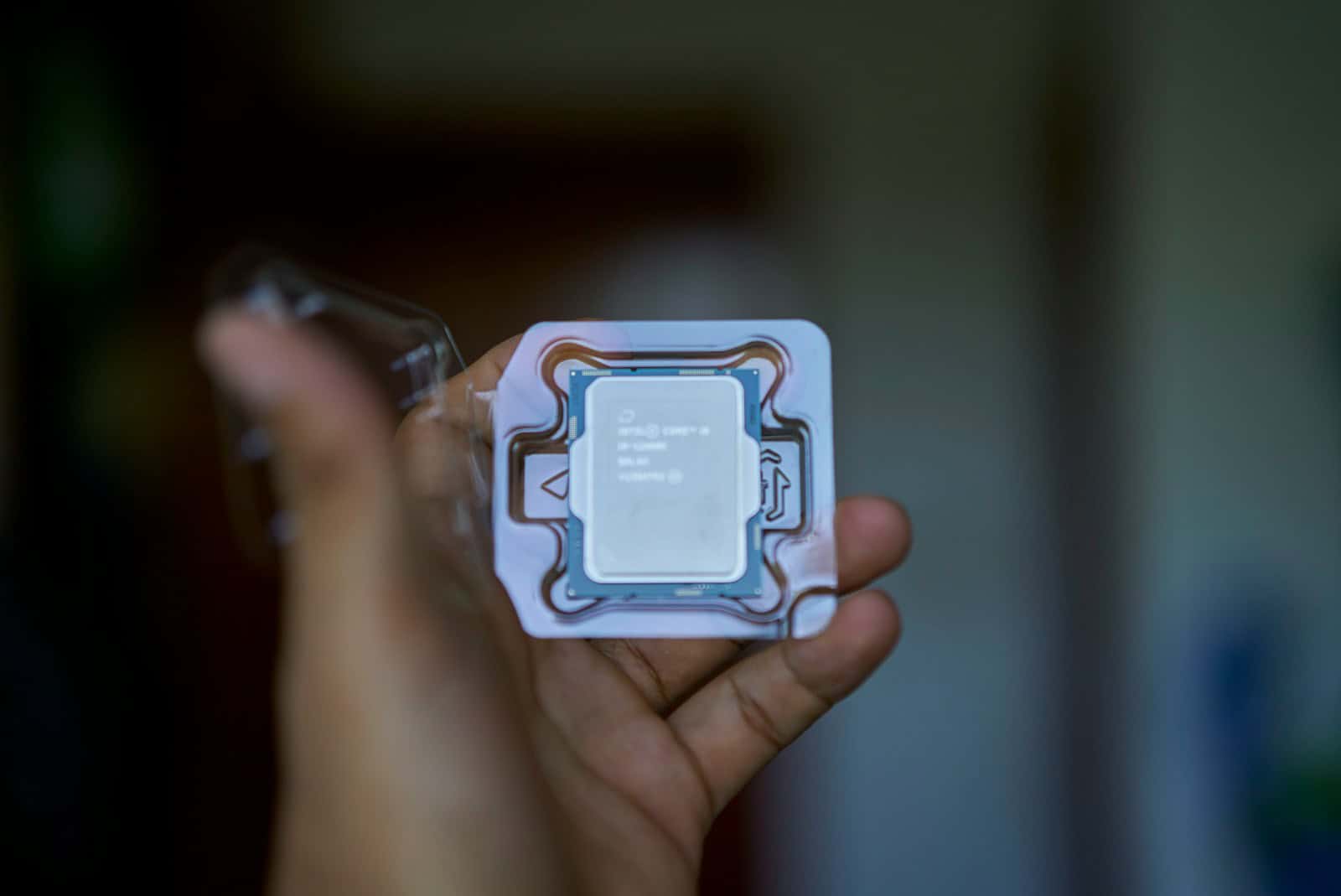Intel CPU sockets are a crucial part of computer hardware. They connect the CPU to the motherboard. These sockets have changed over time to keep up with new tech.
Intel has made many different CPU sockets since the 1970s. Each new socket type can support faster speeds and more features. The latest sockets work with the newest Intel chips.
Picking the right socket is key when building or upgrading a PC. It affects which CPUs you can use. Some sockets only work with certain chip types. Others can support a range of processors.
A Guide to Intel CPU Sockets
Intel regularly updates its processor technology, and with each new generation often comes a new CPU socket. These sockets are crucial as they provide the physical connection between the processor and the motherboard. Understanding Intel’s socket history can be helpful when building or upgrading your PC. It ensures compatibility between your chosen processor and motherboard.
Early Sockets

- Socket 423 (2000): This was one of the first sockets for Intel’s Pentium 4 processors. It was quickly replaced due to limitations.
- Socket 478 (2000): This socket supported Pentium 4 and Celeron processors with a 400 MHz front-side bus. It was widely used for several years.
- LGA 775 (2004): Also known as Socket T, this was a popular socket that supported a range of Pentium 4, Pentium D, Core 2 Duo, and Core 2 Quad processors.
The LGA Era

LGA (Land Grid Array) sockets replaced the older PGA (Pin Grid Array) design. In LGA sockets, the pins are on the motherboard instead of the processor, making them more durable.
- LGA 1366 (2008): This socket was designed for Intel’s high-end Core i7 processors based on the Nehalem architecture.
- LGA 1156 (2009): This socket was used for mainstream Core i3, i5, and i7 processors based on the Nehalem and Westmere architectures.
- LGA 1155 (2011): Supporting 2nd and 3rd generation Intel Core processors (Sandy Bridge and Ivy Bridge).
- LGA 1150 (2013): Designed for 4th and 5th generation Intel Core processors (Haswell and Broadwell).
- LGA 1151 (2015): Used for 6th, 7th, 8th, and 9th generation Intel Core processors (Skylake, Kaby Lake, Coffee Lake, and Coffee Lake Refresh). This socket had multiple revisions with varying compatibility.
- LGA 2066 (2017): Designed for high-end desktop and server processors (Skylake-X and Cascade Lake-X).
- LGA 1200 (2020): Used for 10th and 11th generation Intel Core processors (Comet Lake and Rocket Lake).
- LGA 1700 (2021): The socket for 12th, 13th, and 14th generation Intel Core processors (Alder Lake, Raptor Lake, and Raptor Lake Refresh).
- LGA 1851 (2024): This socket will support Intel’s Arrow Lake 15th generation and future desktop processors. It features an increased number of pins compared to LGA 1700, potentially enabling faster data transfer speeds and support for new technologies.

Intel Socket Timeline
| Socket | Generation(s) | Release Year | Supported Processors |
|---|---|---|---|
| Socket 423 | Pentium 4 | 2000 | Early Pentium 4 |
| Socket 478 | Pentium 4, Celeron | 2000 | Pentium 4, Celeron |
| LGA 775 | Pentium 4, Pentium D, Core 2 Duo, Core 2 Quad | 2004 | Pentium 4, Pentium D, Core 2 Duo, Core 2 Quad |
| LGA 1366 | Core i7 | 2008 | Nehalem |
| LGA 1156 | Core i3, i5, i7 | 2009 | Nehalem, Westmere |
| LGA 1155 | Core i3, i5, i7 | 2011 | Sandy Bridge, Ivy Bridge |
| LGA 1150 | Core i3, i5, i7 | 2013 | Haswell, Broadwell |
| LGA 1151 | Core i3, i5, i7 | 2015 | Skylake, Kaby Lake, Coffee Lake |
| LGA 2066 | Core i7, i9 | 2017 | Skylake-X, Cascade Lake-X |
| LGA 1200 | Core i3, i5, i7, i9 | 2020 | Comet Lake, Rocket Lake |
| LGA 1700 | Core i3, i5, i7, i9 | 2021 | Alder Lake, Raptor Lake |
| LGA 1851 | Core/Ultra 3,5,7,9 | 2024 | Meteor Lake, Arrow Lake |
Key Takeaways
- CPU sockets link processors to motherboards
- Intel has created many socket types over the years
- The socket type limits which CPUs can be used
Overview of Intel CPU Sockets
Intel CPU sockets connect processors to motherboards. They’ve changed a lot over time to work with new chips. Let’s look at how they’ve evolved and what’s used today.
Historical Development
Intel started using CPU sockets in the late 1970s. The first ones were for 8086 and 8088 chips. These old sockets were simple. As CPUs got better, so did the sockets.
In the 1990s, Intel made Socket 1, 2, and 3. These worked with 486 and early Pentium CPUs. Each new socket could handle faster chips.
The 2000s brought big changes. Intel switched to Land Grid Array (LGA) sockets. These had pins on the motherboard instead of the CPU. This design was stronger and could handle more powerful processors.
Socket Design and Technology
LGA sockets are now standard for Intel CPUs. They use tiny metal contacts instead of pins. This makes them less likely to bend or break.
LGA sockets have a lever and latch. These hold the CPU firmly in place. When you close the latch, it pushes the chip onto the contacts.
The number of contacts has grown over time. More contacts let CPUs send and receive more data. This helps them work faster and do more things at once.
Intel also uses Zero Insertion Force (ZIF) in their sockets. This means you don’t have to push hard to put the CPU in. It makes installing or changing CPUs easier and safer.
Current Generation Sockets
Today’s main Intel sockets are LGA 1700, 1200, and 2066. LGA 1700 is the newest. It works with 12th and 13th Gen Intel Core CPUs.
LGA 1200 is a bit older. It fits 10th and 11th Gen chips like Comet Lake and Rocket Lake. LGA 2066 is for high-end desktop CPUs.
Each socket type works with specific CPU models. For example, an Intel Core i7-12700K needs an LGA 1700 socket. A Celeron G6900 uses LGA 1200.
These sockets have different sizes and contact counts. This affects which CPUs and motherboards work together.
Compatibility and Upgrades
Intel changes sockets every few CPU generations. This can limit upgrade options. You might need a new motherboard to use a newer CPU.
Some sockets support multiple CPU generations. LGA 1151 worked with 6th, 7th, 8th, and 9th Gen Intel Core chips. But you often need a BIOS update to use newer CPUs in older boards.
It’s important to check socket compatibility when upgrading. A CPU and motherboard must have the same socket to work together.
Heatsinks also need to fit the socket. Most modern Intel sockets use the same mounting holes. This makes it easier to find compatible cooling.
FAQs
What sockets does Intel CPUs use?
Intel has used a variety of CPU sockets over the years, each designed to support specific generations of processors. Some of the most common sockets include LGA 1700 (current), LGA 1200, LGA 1151, LGA 1150, and LGA 775. Older sockets like Socket 478 and Socket 423 are now discontinued. The upcoming socket for Intel’s next-gen CPUs is LGA 1851. Each socket has a different number of pins and a unique configuration, ensuring compatibility between the CPU and the motherboard.
Which Intel CPU socket is discontinued?
Several Intel CPU sockets have been discontinued as technology has evolved. Older sockets like Socket 423 and Socket 478, which supported early Pentium 4 processors, are no longer in use. Other discontinued sockets include LGA 1366, LGA 1156, LGA 1155, LGA 1150, and LGA 2066. These sockets were designed for specific generations of Intel processors and are not compatible with newer CPUs.
What CPU socket is the Intel i7?
Intel i7 processors have been compatible with a variety of sockets over the years, depending on the generation. Currently, 12th, 13th, and 14th generation i7 processors use the LGA 1700 socket. Older generations used sockets like LGA 1200, LGA 1151, and LGA 1150. It’s crucial to check the specific i7 processor model to determine its compatible socket.
What is the New Intel CPU socket Coming In 2024?
The upcoming Intel CPU socket for 2024 is LGA 1851. It’s designed to support Intel’s next-generation processors, codenamed Meteor Lake (for mobile and embedded) and Arrow Lake (for desktop). This new socket has more pins than the current LGA 1700, potentially allowing for increased performance and new features.
Is LGA1700 dead?
Not quite yet! LGA 1700 is the current socket for Intel’s 12th, 13th, and 14th generation Core processors. While the upcoming LGA 1851 socket will support future generations, LGA 1700 will likely remain relevant for some time as these processors are still widely used. However, as newer generations with LGA 1851 are released, LGA 1700 will eventually be phased out.







